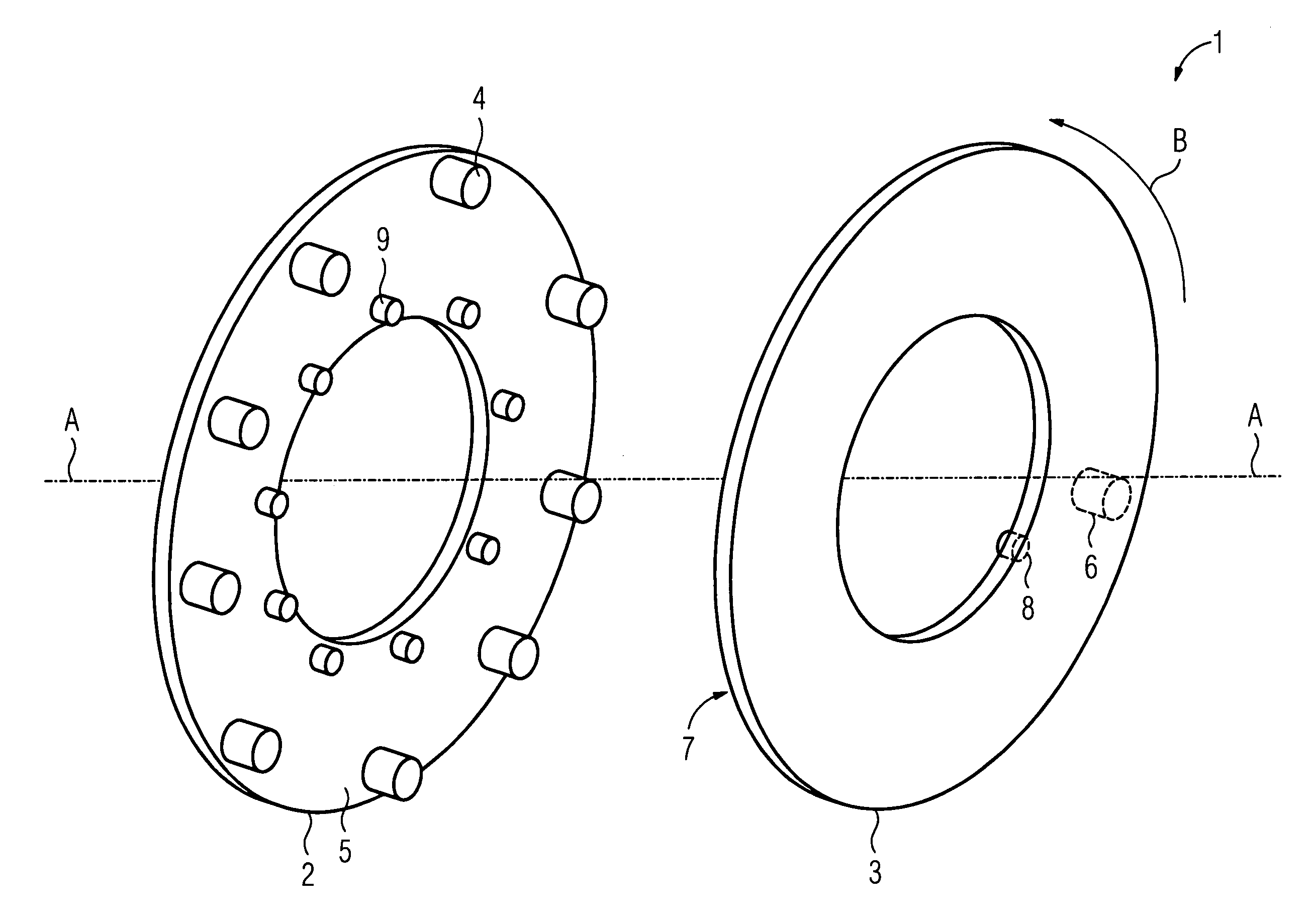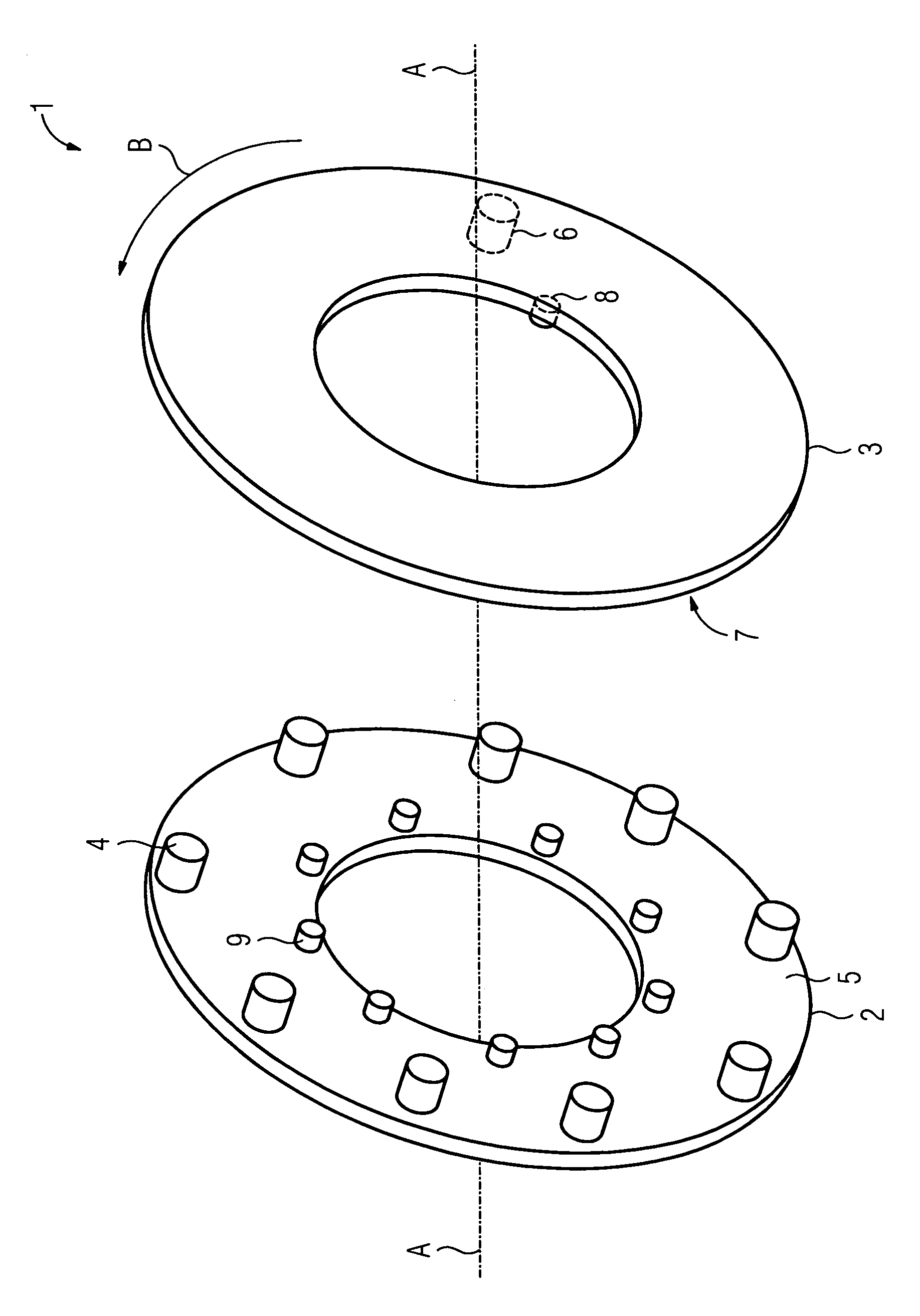Device for transferring light signals between two elements relatively movable to one another
a technology of light signals and moving parts, applied in the direction of photometry using electric radiation detectors, optical radiation measurement, instruments, etc., can solve the problems of increasing the power requirement and limited number of light sources which can be used for data transfer, and achieve reliable data transfer, reduce power consumption, and energy-efficient light signal transfer
- Summary
- Abstract
- Description
- Claims
- Application Information
AI Technical Summary
Benefits of technology
Problems solved by technology
Method used
Image
Examples
Embodiment Construction
[0027]A device 1 illustrated in the FIGURE comprises two elements 2, 3 of a machine tool which are capable of rotary movement relative to one another, between which light signals are transferred. In the present case, the first element 2 is designed as a fixed printed circuit board and coupled to a control cabinet of the machine tool. On the other hand, the second element 3 is a printed circuit board mounted to be capable of rotary movement, which in the present example represents a part of a hollow shaft of the machine tool. The two printed circuit boards 2, 3 are designed as ring-shaped and are arranged axially with respect to one another in such a manner that the printed circuit board 3 mounted to be capable of rotary movement can rotate around an axis of rotation A in a direction illustrated in the FIGURE by means of an arrow B.
[0028]In order to ensure wireless communication between the two printed circuit boards 2, 3, the fixed printed circuit board 2 has a group of light source...
PUM
 Login to View More
Login to View More Abstract
Description
Claims
Application Information
 Login to View More
Login to View More - R&D
- Intellectual Property
- Life Sciences
- Materials
- Tech Scout
- Unparalleled Data Quality
- Higher Quality Content
- 60% Fewer Hallucinations
Browse by: Latest US Patents, China's latest patents, Technical Efficacy Thesaurus, Application Domain, Technology Topic, Popular Technical Reports.
© 2025 PatSnap. All rights reserved.Legal|Privacy policy|Modern Slavery Act Transparency Statement|Sitemap|About US| Contact US: help@patsnap.com


